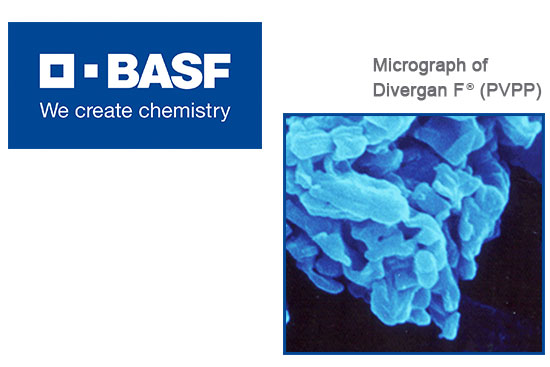Divergan F and Divergan RS PVPP

Divergan F and Divergan RS PVPP
Gusmer is a major distributor of Divergan F to the beer industry. Manufactured by BASF, Divergan F is used throughout the world to chill haze stabilize beer. BASF’s unique polymerization process produces the purist polyvinylpolypyrrolidone, which selectively adsorbs the polyphenols that can cause instabilities. There is evidence that Divergan F also helps to stabilize flavor through the reduction of flavonoid polyphenols, which are particularly prone to polymerize into products of higher molecular weight and potential bitter flavor. Divergan F works quickly, and its short contact time means it can frequently be dosed inline, but it can also be dosed in a batch method.
Divergan RS is a regenerable PVPP, which works in the same manner, but offers some economies to larger facilities that are set up to regenerate it.Divergan F Sizes: 20 kg drums
Divergan RS Size: 20 kg drums
Particle Size: ~ 50 um
Dose Rate:
- Beer up to 65% malt
- Alone: 10-30 g/hL (~2.5-7.75 lb/100 US bbl) With Silica: 10-20 g/hL (~2.5-5.0 lb/100 US bbl)
- Beer more than 65% malt
- Alone: 25-40 g/hL (~5-10 lb/100 US bbl)
- With Silica: 10-30 g/hL (~2.5-7.75 lb/100US bbl)
Contact time: 5 minutes
Polyphenol removal effectiveness: 55% of mass
Preparation of Stabilizers
The amorphous powder should be mixed with deoxygenated water at a 10% w/w ratio. (1 kg powder: 10 liters DAW or ~8 lb: 10 USG DAW). The use of a CO2 sparger in the slurry water will help to deoxygenate the water. Agitate slurry for 1-2 hours prior to addition.
Dosing of Stabilizers
- Inline Method: Slurry is dosed proportionally into the beer stream by means of a metering pump. The products are allowed react with the beer. Depending upon contact time required for each product a buffer tank may be utilized. Resultant sediments can be removed via centrifuge and/or filtration.
- Batch Method: Add the PVPP into the product while filling the finishing tank. Add the stabilizing agent proportionally during the fill or as a single shot method through the spray ball arm. Once the stabilizing agent has reacted with the respective protein or tannin, it will settle to the bottom of the tank as sediment. Settling times vary due to tank geometry and stabilizer/protein/tannin complex size. The stabilized beer can be separated from the sediment prior to filtration and any leftover sediment is easily removed during CIP. Inadvertent over-dosing or contact time of several days causes no negative effects in the beer.
For more information on beer chill haze stabilization and the use of stabilizing agents, please contact your Gusmer representative.
